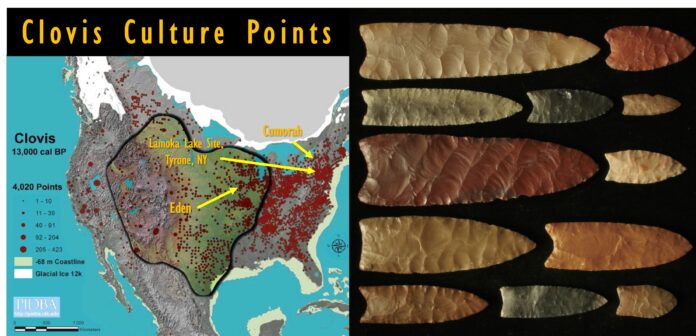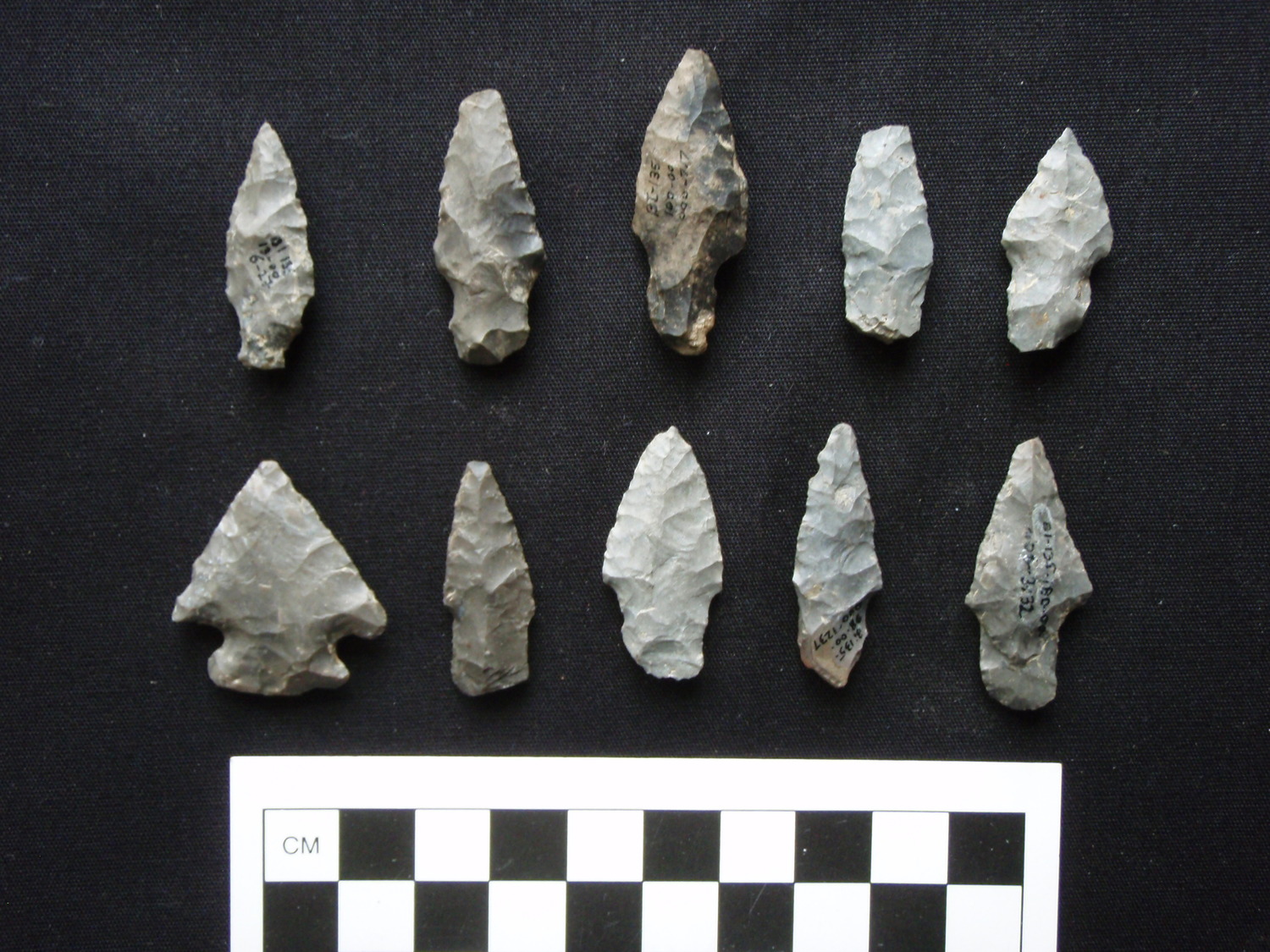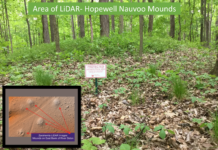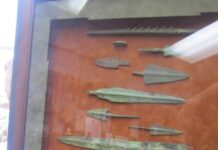It is rare to find archaeological evidence as far back as the Clovis or Adamic time periods of North America. No one know the exact dates of anything archaeological, so be cautioned. It seems very likely the Lamoka Site may fit the Clovis timeline. Remember Adam was placed near Missouri before the Atlantic ocean split the Continents, and Missouri is also where the New Jerusalem will be built in Missouri.
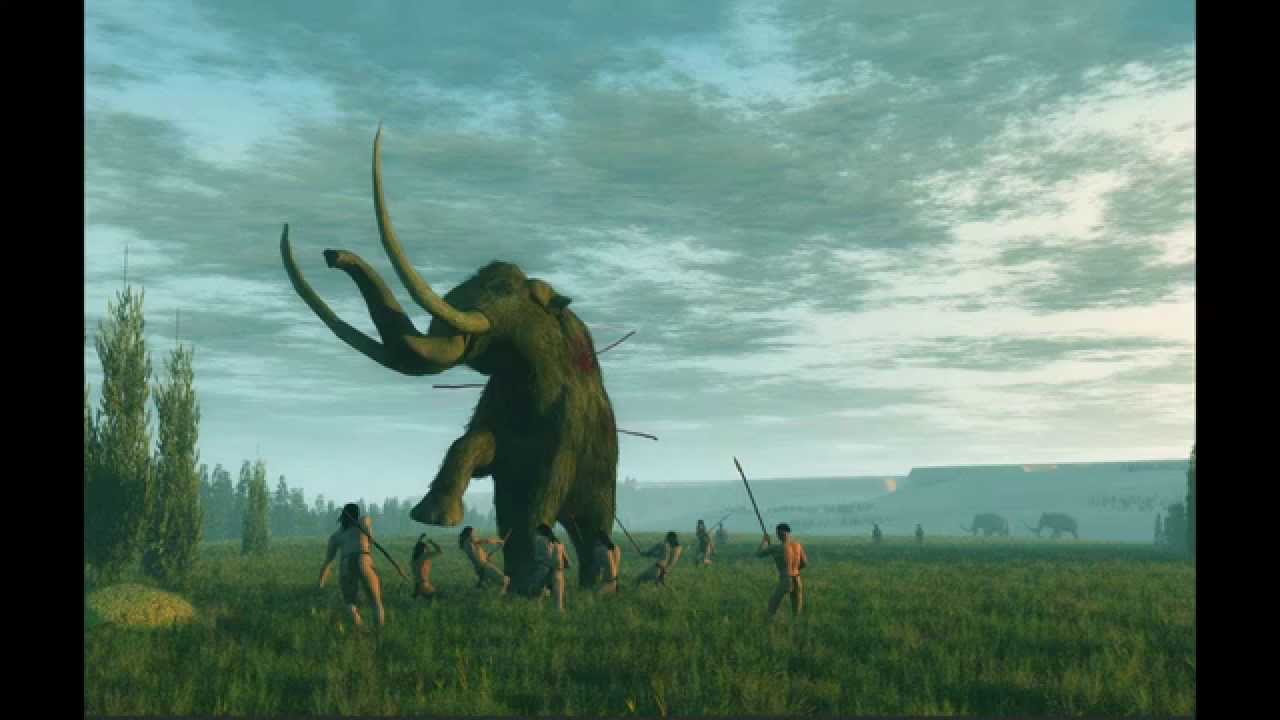
Clovis Culture
The historical people of the Clovis Culture most closely fit the timeline of Adam and Eve’s posterity, what we sometimes call Adamites. No, there were no Pre-Adamites in Church Doctrine and no cave men. Adam was the first Man placed on this earth and it was about 4,000 BC that this happened. The material of the earth of course is billions of years old, in fact it was never created but organized, just as all mater has existed forever. To fully understand archaeological and intelligent dating, one should be familiar with the word of God below:
of , was not or made, neither indeed can be.”

“29 Man was also in the with God. , or the of , was not or made, neither indeed can be.
30 All truth is independent in that in which God has placed it, to for itself, as all intelligence also; otherwise there is no existence.
31 Behold, here is the of man, and here is the condemnation of man; because that which was from the beginning is unto them, and they receive not the light.
32 And every man whose spirit receiveth not the is under condemnation.
33 For man is . The elements are , and and element, inseparably connected, receive a fulness of joy;
34 And when , man cannot receive a fulness of joy.
35 The are the of God; yea, man is the tabernacle of God, even ; and whatsoever temple is , God shall destroy that temple. 36 The of God is , or, in other words, and truth.
37 Light and truth forsake that .
38 Every of man was in the beginning; and God having man from the , men became again, in their infant state, before God.
39 And that cometh and away light and truth, through , from the children of men, and because of the of their fathers.
40 But I have commanded you to bring up your in and truth.” D&C 93: 29-40
The Clovis culture is a prehistoric Paleoamerican culture
“The Clovis culture is a prehistoric Paleoamerican culture, named for distinct stone and bone tools found in close association with Pleistocene fauna, particularly two mammoths, at Blackwater Locality No. 1 near Clovis, New Mexico, in 1936 and 1937 (though Paleoindian artifacts had been found at the site since the 1920s). It appears around 11,500–11,000 uncalibrated years before present (YBP)[1] at the end of the last glacial period and is characterized by the manufacture of “Clovis points” and distinctive bone and ivory tools. Archaeologists’ most precise determinations at present suggest this radiocarbon age is equal to roughly 13,200 to 12,900 calendar years ago.[1]
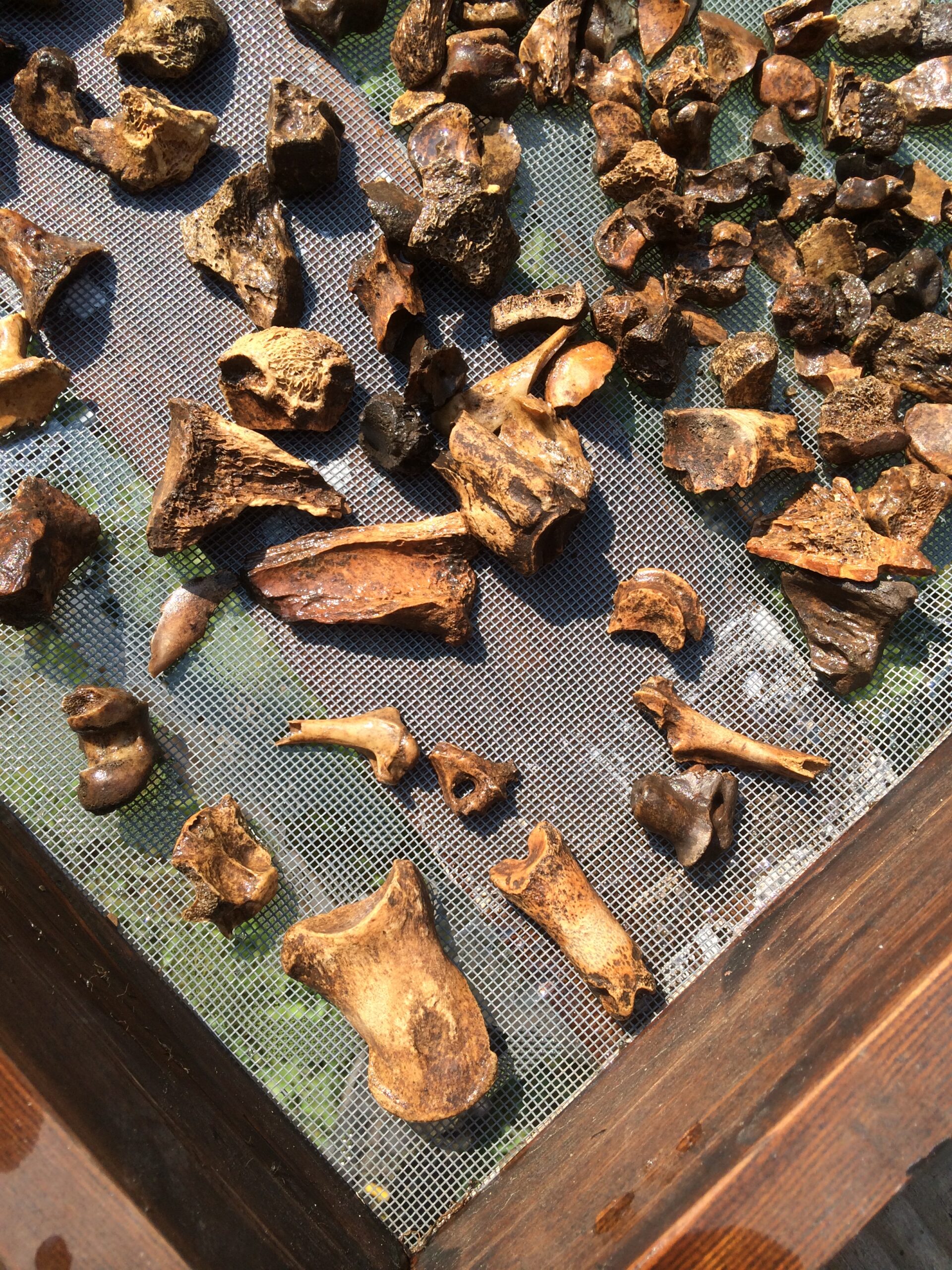
Before Present (BP) years
“Before Present (BP) years, or “years before present”, is a time scale used mainly in archaeology, geology and other scientific disciplines to specify when events occurred relative to the origin of practical radiocarbon dating in the 1950s. Because the “present” time changes, standard practice is to use 1 January 1950 as the commencement date (epoch) of the age scale. The abbreviation “BP” has been interpreted retrospectively as “Before Physics”,[1] which refers to the time before nuclear weapons testing artificially altered the proportion of the carbon isotopes in the atmosphere, which scientists must now account for.[2][3]

Ancient Civilizations of North America
1 Clovis Culture- Adam & Animals 5000 to 4000 BC
2 Archaic Period- 3000 BC to 1000 BC
3 Jaredite Culture- 2400 to 500 BC
4 Adena Culture-1500 BC to 200 AD
5 Woodland (Early) 1000 BC to 200 BC
6 Hopewell Culture- Nephites 600 BC to 400 AD
7 Woodland (Middle) 200 BC to 500 AD
8 Woodland (Late) 500 to 1000 AD
9 Native Americans Mixed with Mayans 800 AD to 1200 AD
10 Fort Ancient-Nephites- 900 AD to1750 AD
11 Mississippian Period- 900 AD to 1300 AD
12 Historic Native Americans 1670 to 1828 AD
Approximate Dates
Where is the Garden of Eden?
The Church of Jesus Christ of Latter-day Saints believe that human inhabitants began with Adam and Eve in the Garden of Eden in Missouri. In D&C 107:53 It says “Three years previous to the death of Adam, he called Seth, Enos, Cainan, Mahalaleel, Jared, Enoch, and Methuselah, who were all high priests, with the residue of his posterity who were righteous, into the valley of Adam-ondi-Ahman, and there bestowed upon them his last blessing.” So we know the Garden of Eden was close to Adam-Ondi-Ahman since Adam lived there his entire life, and assembled there 3 years before his death.
Of course we also know in D&C 116:1 it says, “Spring Hill is named by the Lord Adam-ondi-Ahman, because, said he, it is the place where Adam shall come to visit his people, or the Ancient of Days shall sit, as spoken of by Daniel the prophet.“
So, Spring Hill in Daviess County near Adam-Ondi-Ahman is near this place which is also only 90 miles north of Independence Missouri where the scripture says, “Hearken, O ye elders of my church, saith the Lord your God, who have assembled yourselves together, according to my commandments, in this land, which is the land of Missouri, which is the land which I have appointed and consecrated for the gathering of the saints. Wherefore, this is the land of promise, and the place for the city of Zion. And thus saith the Lord your God, if you will receive wisdom here is wisdom. Behold, the place which is now called Independence is the center place; and a spot for the temple is lying westward, upon a lot which is not far from the courthouse.” D&C 57: 1-3 What a comfort it is to have modern day scripture to keep us on the correct path or the “Covenant Path” as President Nelson says.
The following Information from Elder Hartman Rector Jr I believe is truth. He explains that the American Continent is really the Old World and Europe and Asia and Africa are the new New World. Read on, it is fascinating.
This Land Is Choice
“I thrill when I see the flag. I hope you do, too. It stands for the USA. This is a land choice above all other lands. We have revelation on the subject. There’s nothing like the USA anywhere. There never has been, and I presume there never will be. The Lord has made that comment in respect to this earth. There are those who feel that we in the Western Hemisphere are the New World but, of course, we aren’t the New World at all this is where it all began; thus the USA is really the “Old World.” It was on this continent, near the center of this continent (in fact, very near Missouri, which is the center of this continent), that the Garden of Eden was located. Life didn’t start off over in what they call the “cradle of civilization” or today’s Holy Land. No, it started in the central part of the United States. That’s where Adam and Eve were cast out of the garden. They moved out to earn their bread by the sweat of their brows. Also it was there that Cain slew Abel. It was there that Noah built an ark, in the middle of a continent like the United States. No wonder they thought he was a little bit “strange,” to say the least. It was there that he and his wife and his three sons and their wives embarked on the ark and floated for many, many days. The ark finally came to rest on top of Mount Ararat. They came down out of the ark, and civilization supposedly started from there. But that was the second start. Civilization had already started here…” Hartman Rector Jr.
Canaan vs Cainan
Many scientists believe very differently. But it just makes sense that the area of Missouri is a promised land forever. What was this part of Missouri originally called? Look at Moses 6:17. “And Enos lived ninety years, and begat Cainan. And Enos and the residue of the people of God came out from the land, which was called Shulon, and dwelt in a land of promise, which he called after his own son, whom he had named Cainan.” Not Canaan; that was near Jerusalem. Cainan is the New Jerusalem and Canaan is the Old Jerusalem. This truth just makes sense to me.”
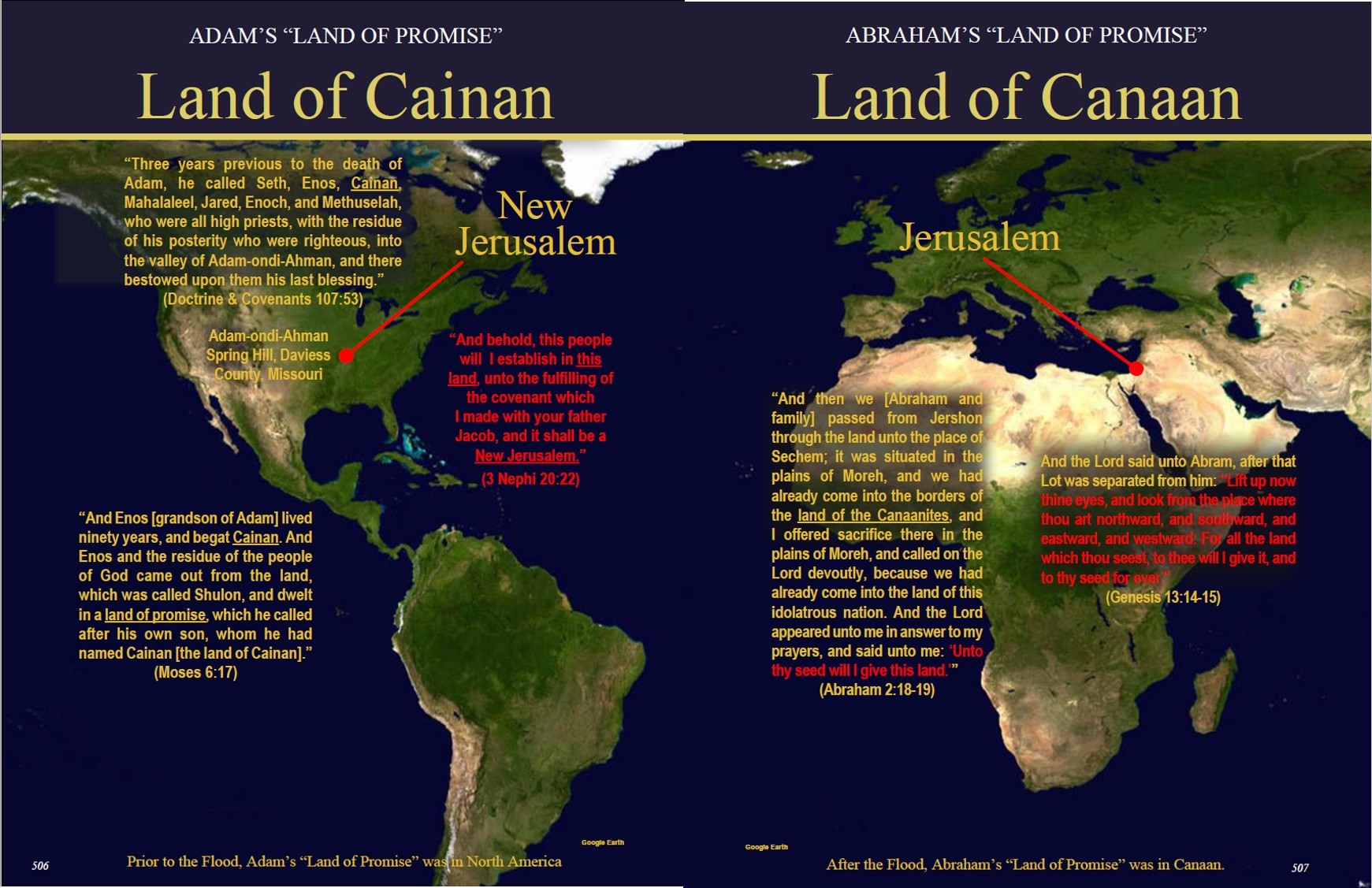
Lamoka Lake Site
The Lamoka site, or simply Lamoka, is an archaeological site near Tyrone, in Schuyler County, New York that was named a National Historic Landmark in 1961.[3] According to the National Park Service, “This site provided the first clear evidence of an Archaic hunting and gathering culture in the Northeastern United States (c.3500 BC)”.[3][4]


More properly known as the Lamoka Lake Site, after the lake of the same name located nearby, this archaeological site, occupied by Late Archaic hunter-gatherers approximately 4,500 years before present, is one of the most important Archaic Period sites in North America due to its seminal role in the identification and naming of a hunting and gathering culture subsequent to Paleo-Indian culture and preceding pottery-using Woodland cultures. As such, the Lamoka Lake site is often considered the type site of the Archaic Period of North American prehistory. The first professional excavations at the site were conducted between 1925 and 1928 by the Rochester Museum of Arts and Sciences, now the Rochester Museum and Science Center. Additional excavations at the Lamoka Lake site were conducted by the New York State Museum in 1958 and 1962, by the Buffalo Museum of Science in the 1980s, by Utica College in the 1990s, and by Rutgers University in 2000. Part of the archaeological site is protected in the Waneta-Lamoka Wildlife Management Area. In 2006, the remaining portion of the site was purchased for preservation by The Archaeological Conservancy.
Archaeological excavations at the Lamoka Lake site have recovered large numbers of projectile points – primarily Lamoka points; stone netsinkers, groundstone and polished stone tools – including beveled adzes, hammerstones, pestles, mullers, mortars, and metates; bone tools – including awls, knives, and fish hooks; lithic debitage; and animal bones – primarily white-tailed deer, tree squirrel, and passenger pigeon; and human burials. Numerous archaeological features, including pits, postmolds, hearths, firebeds and ash layers, have also been identified. The majority of artifacts and features date to the Late Archaic Period, although later Woodland Period artifacts have also been recovered from the site. References “National Register Information System – (#66000571)”. National Register of Historic Places. National Park Service. July 9, 2010. Knoerl, John; Miller, Diane; Shrimpton, Rebecca H. (1990), Guidelines for Restricting Information about Historic and Prehistoric Resources, National Register Bulletin, National Park Service, U.S. Department of the Interior, OCLC 20706997. “Lamoka”. National Historic Landmark summary listing. National Park Service. 2007-11-16. Archived from the original on 2011-06-05. Ritchie, William A. (1997). The Archaeology of New York State (revised edition). Purple Mountain Press. ISBN 978-0-935796-52-0.
See additional information that shares with you about the Lamoka Nation and the arrowheads of the Hopewell, titled, Land of Many Waters, Rivers, and Fountains/Carrying Places
The Enigmatic Archaic Site at Lamoka Lake, New York
Arthur Parker had long suspected that New York State’s prehistoric past featured a very ancient era before the invention of pottery and agriculture. By the early 1920s, he referred to this poorly-documented period as the Archaic Algonkian (Parker 1922). He also recognized another early culture that he called Eskimo-like due to the presence in artifact assemblages of polished stone (especially slate) items similar to those used historically by Inuit people. The Eskimo-like artifacts included ground and polished ulus (a.k.a. semi-lunar knives) and projectile points or knife blades, which in some places were found with other polished stone types such as plummets and gouges (these later were grouped together as diagnostic types of Laurentian Archaic assemblages; Ritchie 1944). Parker (1922) was not sure which was earlier, the Archaic Algonkian or Eskimo-like culture.
As William Ritchie (1932:81) has related, Parker learned of the Lamoka Lake site in 1905, when he was employed in Albany as the New York State Museum’s archaeologist. Soon after he arrived to direct the Rochester Museum in 1925, Parker gave Ritchie the assignment to investigate the Lamoka Lake site, and perhaps in its depths find confirming evidence of the Archaic Algonkian. Parker’s (1926:14) writing as the excavation proceeded illustrates his prescient thoughts about the age of the Archaic:
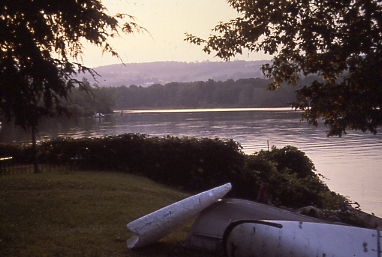
“It seems quite likely that the various Algonkian occupations of western New York cover an era of more than 5,000 years and nearly twice as long, for as we enter the archaic period, artifacts become rarer, and many are found deep in the soil.” At Lamoka Lake, many artifacts indeed were found deep in the soil, as deep as four feet; and pottery— relatively rare at this site compared to stone and bone artifacts or faunal remains— was found only in the upper level. As revealed in Ritchie’s excavations conducted from 1925 through 1928, the Lamoka Lake site was an extremely rich source of information. Eventually estimated as about three acres in size, and covered with a deep midden, the site provided evidence of 380 storage pits (3-7 feet in diameter), many hearths (some in re-used pits), many so-called lodge floors (possibly indicating small houses), 13 large ash-filled features referred to as fire-beds and numerous human burials, some of which were buried in purposefully constructed graves, while others were placed in re-used pits. The midden soil is described as dark, organically-stained refuse.
It also contained shell (referred to as the freshwater genus Unio, now called Elliptio). It isn’t clear how much shell was contained in the midden, although there may have been a substantial amount, and much may have disintegrated. For example, Ritchie (1932:87-88) describes the midden as extensively “impregnated with calcium salt”, effervescing “furiously” in dilute hydrochloric acid. Ritchie inferred that a “great quantity of calcium carbonate and phosphate was derived from the clam shells, bones and fish scales through the agency of saprophytic bacteria and the action of carbonic acid” as organic matter in the midden decayed. The consideration of fresh-water shell in the midden is important due to later comparisons between the Lamoka Lake site (or a broader Lamoka culture) and the Shell Mound Archaic of Kentucky.
Elliptio is a genus of medium- to large-sized freshwater mussels
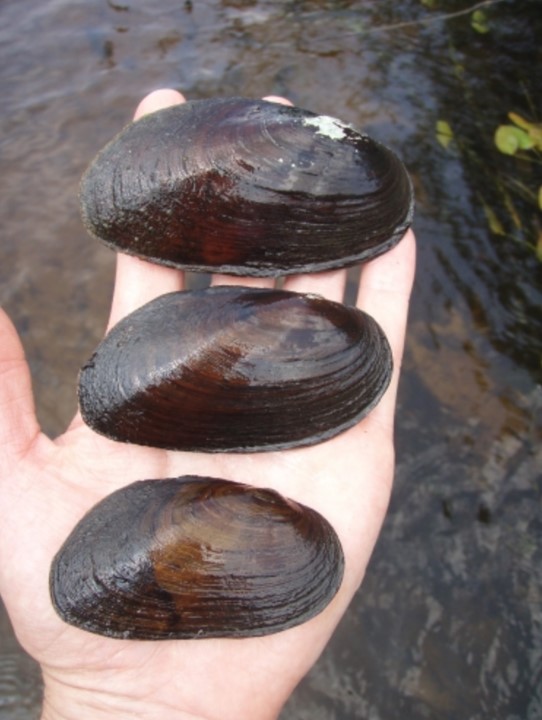 In contrast with many other groups of American Unionidae, the Elliptio species reach their greatest diversity in the Atlantic-draining rivers of Georgia and the Carolinas, and large parts of Florida. One species ranges north into New England and southern Canada, and two occur in the interior Mississippi drainages. Most Elliptio species have elongated shells, with silvery or purplish interior nacre beneath a thick periostracum, and few reach large size or thickness. The genus name Elliptio refers to the elliptical shape of these bivalves. As of 2003 there are 36 species in the genus.
In contrast with many other groups of American Unionidae, the Elliptio species reach their greatest diversity in the Atlantic-draining rivers of Georgia and the Carolinas, and large parts of Florida. One species ranges north into New England and southern Canada, and two occur in the interior Mississippi drainages. Most Elliptio species have elongated shells, with silvery or purplish interior nacre beneath a thick periostracum, and few reach large size or thickness. The genus name Elliptio refers to the elliptical shape of these bivalves. As of 2003 there are 36 species in the genus. Elliptio is a genus of medium- to large-sized freshwater mussels, aquatic bivalve mollusks in the family Unionidae, commonly known as the unionids, freshwater mussels or naiads. Source
Elliptio is a genus of medium- to large-sized freshwater mussels, aquatic bivalve mollusks in the family Unionidae, commonly known as the unionids, freshwater mussels or naiads. Source
The large fire-beds were sometimes over 55 feet long, 10 feet wide, and several feet deep. They are assumed to have been created to smoke or dry fish or meat (presumably hung on scaffolds). They reportedly were composed of deep white and buff ash deposits interspersed with hearths (Ritchie 1932:86-87). Ritchie (1932:83) reported the site itself was marked by a low (18”) ridge containing a line of deep fire-beds. The so-called lodge floors were difficult to discern in terms of overall size, but Ritchie (1932:87) estimated them as being as large as 12-18 feet across. Initially, they were not described as associated with post molds, and were defined by alternating strata of midden soil and sand spread on the midden surfaces. These strata varied in thickness, but in some cases appear to represent laminated floors of 20-30 alternating bands. Ritchie believed that these were house floors with midden accumulations periodically covered with clean sand for sanitary reasons. Ritchie (1940) made a similar argument for the Brewerton sites (although some of the sand or gravel spreads were too small to represent house floors). In his early work at these sites, post molds were not identified in association with these hypothetical floors. Working again at Lamoka Lake in 1962, Ritchie (1969; Ritchie and Funk 1973) partially correlated remnants of laminated floors with postmold patterns revealed in the subsoil below the midden.
Although there was a profusion of postmolds in the subsoil, Ritchie proposed that several delineated lines of post molds indicate house wall outlines. He published a map well-known to Northeastern United states archaeologists that shows these inferred house outlines (Ritchie 1969:72-73; Ritchie and Funk 1973:42-43). I have alternatively suggested that the laminated floors may represent the repetitive placement of so-called special earths (Hall 1979) in association with the performance of rituals, perhaps associated with the earth-diver myth, which is widespread in North America and Eurasia, and therefore may be very old (Curtin 2008). However, whatever the reason for the layering of sand and dark (midden) earth, the repetitive nature indicates the reuse of the same places over substantial periods of time as the midden developed; this is remarkable evidence of continuity and permanence during the Archaic period, when many sites were occupied for short periods and then abandoned. Burials of individuals in flexed (or rarely, partially or atypically flexed) positions were found in the subsoil and in all levels of the midden soil. The burials were made either in excavated graves or re-used storage pits (and it seems more often in purposeful graves than re-used pits).
Few burials contained funerary objects, but if they did, they usually contained marine shell beads that originated in coastal areas, and were passed as gifts or trade items to (and probably through intermediary) interior communities. Four burials were associated with marine shell, including (in different burials) species of Olivella, Marginella, and conch (whelk) columella. Ritchie assumed that most of the Lamoka Lake shell associations occurred with the burials of the later (Woodland) site occupants. However, there is no strong evidence of that, and in all cases, burials with shell were flexed like the other Lamoka Lake burials.

One of the burials with shell (Olivella) beads was in an apparently early grave intruding into the subsoil. On the other hand, one burial without shell clearly was made during the later occupation, as it had broken pottery in the grave above and below the skeletal remains. All of the general classes of shell beads found at Lamoka Lake were also found at Shell Mound Archaic sites in Kentucky. At the same time, certain kinds of shell beads were found in the Shell Mound Archaic that are not represented at Lamoka Lake (Winters 1968 and Claassen 1996 summarize data on shell bead associations at Shell Mound Archaic sites).” Continued
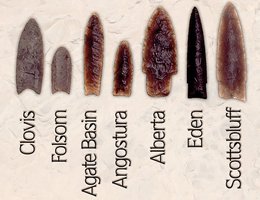
g-headed people. In more contemporary perspective, based on research conducted with other Great Lakes and Northeastern Archaic skeletal populations, it seems unlikely that two Archaic period physical types are represented at Lamoka Lake (cf. Pfeiffer 1977; Schneider and Sciulli 1983). The historic context in which Ritchie performed his analysis of Lamoka Lake skulls was one in which such craniometric research was common, and interaction between round-headed and long-headed groups, including hostility and warfare, often was inferred (Buikstra 1979 and Gould 1981 discuss the 19th and early 20th century development of these theories and methods).Skeletal Biology of Archaic Populations of the Great Lakes Region
The Enigmatic Archaic Site at Lamoka Lake, New York continued, “When Ritchie’s (1932) individual data on the measurement of head shape— the cephalic (a.k.a. cranial) index calculations— are examined as a frequency distribution, there is a wide distribution from 67.1 to 84.1 without clear modes or clustering. However, the division between brachycephaly and dolichocephaly had been established in general by others (in the 19th century) as 75-80 (with 76-79 considered intermediate between the two, and sometimes the product of intermarriage). Ritchie appears to have used the value of 75 to divide his sample (to do otherwise would be inconsistent with the method). Two skulls with cephalic indices somewhat higher than 75 were discussed as being intermediate, but in the final analysis were classified as long-headed (one of these was the Woodland period skull with pottery in the grave). The decision to include intermediate cephalic index measurements with the group of dolichocephalic individuals deemphasizes the continuous nature of the range of skull shape in the Lamoka Lake data.
So it seems that both craniometry and Ritchie’s judgment were used to provide the interpretation that two physical types existed at the site. However, Franz Boas’ publications on physical anthropology of the late 19th-early 20th century (reprinted in Boas 1940) indicate greater need for caution in the interpretation of cephalic index data. When all of the craniometric data from a variety of New York prehistoric sites and cultures published in Ritchie (1944) are considered, most populations are relatively “long-headed” in the majority, but contain relatively “round-headed” individuals, a situation quite similar to Lamoka Lake. Viewing Lamoka Lake artifactual and stratigraphic data from a contemporary perspective, we now know that over 2,000 years of time separate the Archaic and later (Woodland) periods of occupation at the Lamoka Lake site. Thus, it is not possible that the later occupants violently seized the site from the original inhabitants.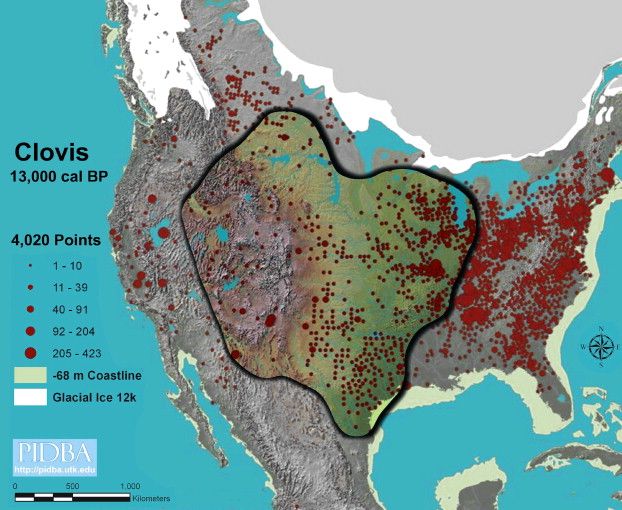
While the particular warfare he envisioned was not possible at this site, Ritchie (1932) did find evidence that violence had occurred during the Late Archaic period. This evidence includes his discovery of a reused pit containing the skeletons of two young men who had been decapitated and shot with projectile points (possibly in that order), before burial (flexed in an unusual manner) in the upper part of the pit. A third man who had been buried at the site had a projectile point in his thoracic cavity; Ritchie regarded this as the “instrument of death.” The projectile points are the narrow-bladed Lamoka type, indicating that death was at the hands of culturally similar (although inimical) neighbors, or even members of the Lamoka Lake community. There is an aspect to the deaths of the two young men that suggests execution, although this doesn’t necessarily mean they were executed by their own community.
Ritchie (1932, 1944, 1969) long-considered three kinds of artifacts to be diagnostic of the Lamoka culture, within which he included the sites at Lamoka Lake, Geneva, and Scottsville, New York, as well as a variety of other less-explored locations in central New York and the Genesee valley. These artifact classes include the narrow-bladed, stemmed or weakly side-notched Lamoka type projectile points, polished-stone beveled adzes, and antler pendant-like artifacts. The projectile points are the most common characteristic linking the three type-sites with the others.
It is interesting to note that Ritchie’s (1969:44-45) distribution map of beveled adz finds shows that the major concentration was in the Genesee valley, with declining frequency away from this center, except for minor secondary centers at large sites such as Lamoka Lake. This pattern suggests that although beveled adzes seem a good diagnostic of Lamoka culture, they may have been acquired by many communities (such as Lamoka Lake and Geneva) from communities of manufacturers in the Genesee valley. Farther afield, isolated beveled adzes found in places such as south of Lake Erie, southern Ontario, or eastern New York may represent outliers that reached non-Lamoka communities through exchange networks.
It would be good to discuss the broader distribution of antler pendant-like artifacts also, but because of poor bone preservation at most Archaic sites, they have been found in very few places. At the same time, Lamoka-type projectile points, are widely distributed and used by archaeologists to infer general aspects of chronology and cultural association. However, in view of the more limited spatial distribution of beveled adzes, Lamoka points probably imply a different kind of cultural process, and not necessarily a close actual connection to the Lamoka Lake community. The Lamoka Lake rough and ground stone technology is also very notable, especially due to its abundance.
Notched pebble netsinkers, totaling more than 7,000 were most numerous. In addition, there were abundant food processing implements such as pestles, hand-held mullers, flat milling stones with ground or worn basins, and pitted stones (for cracking nuts). The rough stone category also includes numerous hammerstones and roughly chipped choppers. When the rough and ground stone category is calculated as a percentage of the non-perishable artifact assemblage, Lamoka Lake stands out as unusual among large Archaic assemblages from New York sites, being similar only to the Geneva site at the foot of Seneca Lake (Geneva is the other Lamoka culture site with a large number of netsinkers). When the same comparison is made excluding netsinkers, Lamoka Lake is unique in having an extremely high percentage of rough and ground stone items (Curtin 1998).
Fishing was important at the Lamoka Lake site, and in addition to the great abundance of netsinkers, numerous bone fish hooks and gorges (also used in line fishing) were recovered. The Lamoka Lake bone refuse contained several examples of bone fish hook cut-outs and incomplete examples related to the on-site, fish hook manufacturing process. The Lamoka Lake subsistence economy has long been of interest. In addition to fishing, nut processing (especially of acorns) has been documented. The abundant animal bones recovered from the site indicate a focus on deer (especially during fall and winter), but also the use of a wide range of mammals, birds, fish, and turtles. Analyses of Lamoka Lake faunal assemblages by T. Cregg Madrigal has shown that a wide variety of small-bodied animals (including fish, squirrel, and passenger pigeons, plus many others) made important contributions to the diet, especially during the spring and summer when deer were thin after winter, or relatively dispersed as the season matured (Madrigal in Versaggi et al 2001).
The faunal analysis indicates that the Lamoka Lake population was relatively sedentary, occupying the site through several seasons, perhaps year-round (Madrigal 2001). The age of the Lamoka Lake Archaic occupation was established by radiocarbon dating of charcoal found at various levels. The majority of the dates fall within the range of about 4400-4600 radiocarbon years BP (excluding large standard deviations). One date was 5383+/-250 BP, and may date an earlier occupation (Ritchie expressed distrust of this date, thinking it was too early). Two hearth charcoal sample obtained from the subsoil in 1962 produced dates around the median of the majority, ca. 4500 BP. Thus, the midden (or at least some of it) seems to have developed after about 4500 BP. Radiocarbon dates from other Lamoka components in the Susquehanna drainage fall in the 4600-3800 BP time frame (Funk 1993). Evidence of earlier Archaic occupation at Lamoka Lake occurs in the form of a single bifurcated base point (ca. 8000-8500 BP), and several broad notched points of apparent Brewerton type. The Brewerton culture may be at least partly contemporary with Lamoka, but the radiocarbon dates accepted by Robert Funk (1988, 1993) are earlier, sometimes by several hundred years. Ritchie’s last fieldwork at Lamoka Lake was in 1958 and 1962.
Several other investigators have examined the Lamoka Lake site more recently. These include R. Michael Gramly (1983), Tony Luppino (in the 1990s), and T. Cregg Madrigal (ca. 2000). Madrigal has studied several faunal assemblages, including those made by Ritchie, Gramly, and Luppino. More recently, the Lamoka Lake site has been reconsidered by Kenneth Sassaman (2010). Of great interest to archaeologists interested in Lamoka, Sassaman has revived the idea that the Lamoka culture does not fit particularly well in the Northeast, and may have antecedents in the southern Appalachians. From the 1940s into the 1970s, several archaeologists remarked about similarities between the Lamoka culture (especially as evidenced at Lamoka Lake) and the Shell Mound Archaic found in the Ohio drainage, especially along the Green River of western Kentucky. Also thinking that Lamoka did not fit well among ancient New York State cultures, Ritchie seems to have been much more comfortable viewing the Laurentian Archaic as a suitable foundation for subsequent Woodland cultures in the Northeast, seeing similarity and continuity over time between Laurentian and later traditions (Funk 1988:8; Ritchie 1946:105).
With regard to Lamoka-Shell Mound Archaic similarities, I have already mentioned antler pendant-like artifacts and similar kinds of marine shell beads. There is also the question of apparently abundant fresh-water shell decaying in the Lamoka Lake soil matrix. In addition to these, Sassaman (2010) focuses on similarities in the practice of line-fishing with hooks, and a similar technology and process for manufacturing bone fish hooks. Could the enigmatic Lamoka culture, so familiar to students of New York State archaeology, have arrived in upstate New York in a wave of migration that began with the abandonment of Shell Mound Archaic sites in Kentucky?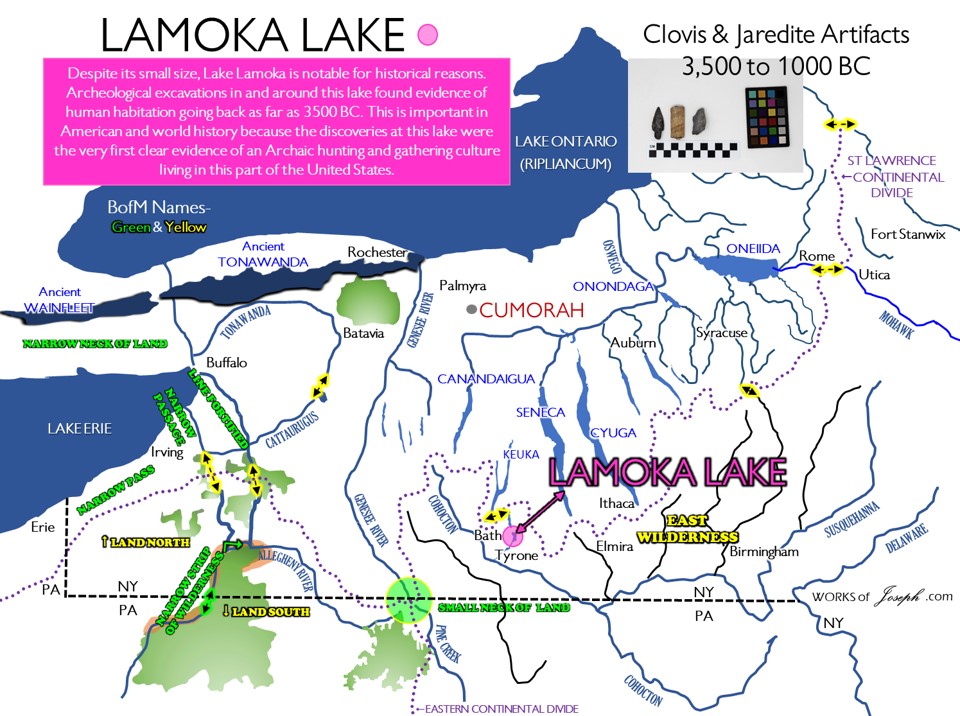
References Cited
Boas, Franz 1940 Race, Language and Culture.
The Free Press, New York. Buikstra, Jane 1979 Contributions of Physical Anthropologists to the Concept of Hopewell: A Historical Perspective. In Hopewell Archaeology: The Chillicothe Conference, edited by N’omi Greber, pp. 220-233.
The Kent State University Press, Kent, Ohio. Claassen, Cheryl 1996 A Consideration of the Social Organization of the Shell Mound Archaic.
In Archaeology of the Mid-Holocene Southeast, edited by Kenneth E. Sassaman and David G. Anderson, pp. 235-258. University Press of Florida, Gainesville. Curtin, Edward V. 1998
The Archaeology of the New York Archaic: A Reconsideration of with Implications for Studies of Hunter-Gatherer Land Use. Ph D. Dissertation, Department of Anthropology, Binghamton University, Binghamton, New York. 2008 Places, Landscapes, Ancestors and Memory: On the Role of Social Memory in the Formation of Archaic Period Settlement Patterns. Presented at the 75th Annual Conference of the Eastern States Archeological Federation, Lockport, New York, November 6-9, 2008. Funk, Robert E. 1988
The Laurentian Problem: A Review. Archaeology of Eastern North America 16:1-42. 1993 Archaeological Investigations in the Upper Susquehanna Valley, New York State, Volume 1. Persimmon Press, Buffalo. Gould, Stephen Jay 1981 The Mismeasure of Man. W. W. Norton and Company, New York. Gramly, Richard Michael 1983 Below-the-Watertable Archaeology at Lamoka Lake.
North American Archaeologist 4(2):127-139. Hall, Robert L. 1979 In Search of the Ideology of the Adena-Hopewell Climax. In Hopewell Archaeology: The Chillicothe Conference, edited by N’omi Greber, pp. 258-265. The Kent State University Press, Kent, Ohio. Madrigal, T. Cregg 2001 Deer, Passenger Pigeons, and Hunter-Gatherers: Late Archaic Subsistence and Seasonality in Central New York.
The Bulletin of the Archaeological Society of New Jersey 56:66-73. Parker, Arthur C. 1922 The Archeological History of New York. New York State Museum Bulletins 235-238, Albany. 1926 The History of the Seneca Indians. Empire State Historical Publications Series XLIII; reissued in 1967 by Ira J. Friedman, Inc., Port Washington, New York. Pffeifer, Susan 1977
The Skeletal Biology of Archaic Populations of the Great Lakes Region. Archaeological Survey of Canada Paper No. 64, Mercury Series, National Museum of Man, Ottawa. Ritchie, William A. 1932 The Lamoka Lake Site. Researches and Transactions of the New York State Archeological Association 7(2), Rochester, New York. 1944 The Pre-Iroquoian Occupations of New York. Rochester Municipal Museum Memoir 1, Rochester, New York. 1946 Archaeological Manifestations and Relative Chronology in the Northeast.
In Man in Northeastern North America, edited by Frederick Johnson, pp. 96-105. Papers of the Robert S. Peabody Foundation for Archaeology, Volume 3, Phillips Academy, Andover, Massachusetts. 1969 The Archaeology of New York State, second edition. Natural History Press, Garden City, New York. Ritchie, William A. and Robert E. Funk 1973
Aboriginal Settlement Patterns in the Northeast. New York State Museum and Science Service Memoir 20, Albany. Sassaman, Kenneth E. 2010 The Eastern Archaic, Historicized. AltaMira Press, Lanham, Maryland. Schneider, Kim N. and Paul W. Sciulli 1983 Biological Affinities among Ohio and Great Lakes Archaic Amerindians: A Multivariate Analysis Based on Cranial Morphology.
Ontario Archaeology 40:3-8. Versaggi, Nina M., LouAnn Wurst, T. Cregg Madrigal, and Andrea Lain 2001 Adding Complexity to Late Archaic Research in the Northeastern Appalachians. In Archaeology of the Appalachian Highlands, edited by Lynne P. Sullivan and Susan C. Prezzano, pp. 121-133.
The University of Tennessee Press, Knoxville. Winters, Howard D. 1968 Value Systems and Trade Cycles of the Late Archaic in the Midwest. In New Perspectives in Archeology, edited by Sally R. Binford and Lewis R. Binford, pp. 175-221, Aldine Publishing Company, Chicago. Arthur C. Parker, Lamoka, Lamoka beveled adze, Shell Mound Archaic, William A. Ritchie

